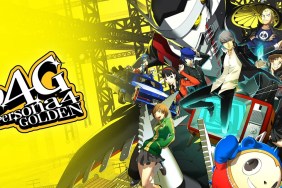We come in peace (psst…shoot to kill, men!)
Well, it’s officially Star Trek time again. I needn’t mention the previous
failures this game license
has produced, but suffice to say the license’s record has been a bit, uh, blotched.
The last attempt at a Star Trek FPS was the game Klingon
Honor Guard, which was mediocre at best. Now, with the (sort of) brand new
Quake 3 engine, they’ve made one more go at
it.
This time, however, they got something right. With a really cool (albeit short)
single player, an impressive multiplayer and a proven graphics engine, Star
Trek Voyager: Elite Force has managed to fight off the curse which until
now has plagued most Star Trek action games.
Sometime in the past, the ever-logical Tuvok decided that it would make sense
for Voyager to have a small group of people trained for armed combat in strange
places. You play Ensign Alexander Munroe, who is second in command of this “Elite
Force.” As the game opens, you have been kidnapped by the Borg in the middle
of testing a new weapon. But that’s just the beginning.
The graphics, in a word, are superb. From detailed weapons to terrific lighting
effects to smooth character animation, everything just looks great. When the
guys at Raven licensed the Quake 3 engine, they tweaked it a bit and
spent more time on weapon effects, textures and the maps themselves, making
it look even better than the engine’s namesake.
They’ve done an especially masterful job establishing the Star Trek universe.
The halls of Voyager are straight from the TV show, while the Klingon, Borg,
and Original Series Federation ships look appropriate. The only bad thing is
that the models of some of the popular characters (Seven of Nine, Janeway, etc.)
don’t look all that great. Oh well.
But while the graphics spark interest, the gameplay itself is what keeps you
going. The single player is somewhat reminiscent of Half-Life
in that the plot develops slowly throughout the game, rather than fighting through
a level only to have the story yelled at you at once. The story itself seems
like it could be a Voyager episode, with all the yummy plot bits you could care
for.
Although you are mainly on a solo mission, sometimes your teammates follow
you into dangerous situations. Surprisingly, their AI is quite good. They shoot
at bad guys (though your weapons do more damage), follow you closely without
getting stuck all the time, and actually don’t constantly kill themselves off
(perhaps they’re invincible). Plus, your teammates give you hints to puzzles
that are a pain to solve. For once, your compatriots are actually helpful!
Who woulda thunk it?
Speaking of the puzzles, it’s nice that all your time isn’t spent retracing your steps. While there is the occasional find-the-key-then-go-back-and-use-it type of puzzle, usually something interesting happens to change the situation on the way back. The other puzzles fit fairly well into the story, keeping them from feeling like they were added on at the last minute.
The biggest problem is that the single player is quite short, only taking me about 10-12 hours to beat it on normal difficulty. While there is a little replayability due to the different challenge levels, there isn’t much chance you would go right back into the game after playing it all the way through.
 Which
Which
takes us on to multiplayer. For those of you who’ve played Quake 3, you
already know how the game is played. You have the same primary types of games,
including Deathmatch, Team Deathmatch and Capture the Flag.
Elite Force multiplayer (called Holomatch) feels much cleaner than
Quake 3, both in terms of interface and sheer blood and guts. That’s right,
there’s no real gore in Holomatch. People fall to the floor if they die and
get vaporized if they’ve really been destroyed. But since Star Trek has never
really had that much blood in it, it isn’t really missed that much.
The primary interface bits, like your health, armor, and ammo, are more strategically placed on the screen, leaving you more real estate to actually see the beautiful graphics. Plus everything has that sleek Star Trek design, which works fairly well.
In addition, the weapons in Holomatch are more complex than those in Quake
3. In Q3, every weapon had one and only one firing mode, which was
often considered to be a bad thing. Every weapon in Holomatch has two firing
modes. Although not as complete as Unreal Tournament,
the weapons have a good amount of variety and give you many strategies for blowing
the daylights out of enemies. Firing a mini Photon Torpedo at someone certainly
has its merits.
The sound is quite good, consisting of the standard set of Star Trek sounds, plus explosions, zaps, screams of agony and all that rot. The single player voice acting is also quite good, using the talents of the Voyager cast (save for Seven of Nine’s Jeri Ryan). I’ll bet they’ve done this so many times that they could play these parts in their sleep.
Overall, Elite Force screams quality gaming, though perhaps a little
short of quantity. If you consider yourself any kind of Trekkie, you will like
this game. For those of you who aren’t, I recommend you try it out. You may
become one.

-
Terrific graphics
-
Great single-player game
-
Multiplayer rocks
-
Good sound
-
Too short
-
Where's Jeri Ryan?











